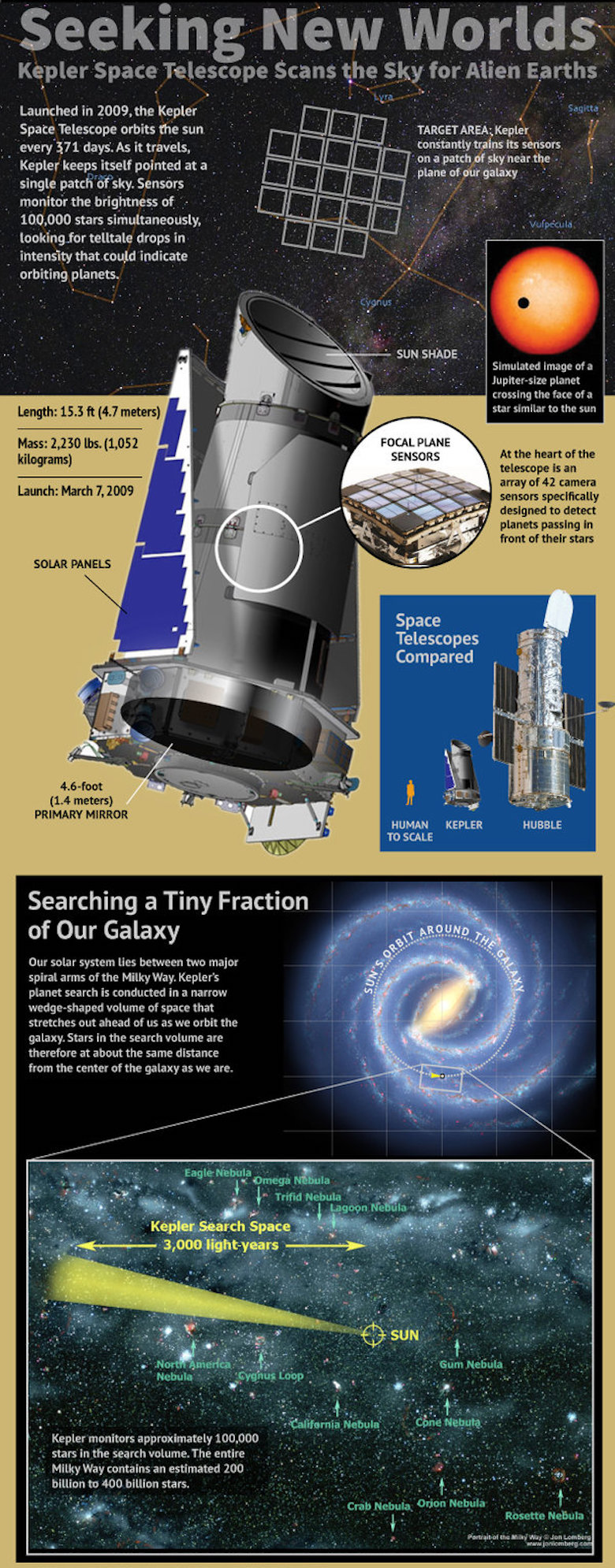

NASA has recently announced that the Kepler space telescope has run out of fuel and will be retired after a 9-1/2-year mission in which it detected thousands of planets beyond our solar system and boosted the search for worlds that might harbour alien life.
Context
NASA has recently announced that the Kepler space telescope has run out of fuel and will be retired after a 9-1/2-year mission in which it detected thousands of planets beyond our solar system and boosted the search for worlds that might harbour alien life.
About
- Launched in March 2009, the $600 million Kepler mission searched the night sky for Earth-like planets using the “transit method.”
- The probe’s camera measured changes in the brightness of 150,000 stars in one patch of sky to identify alien planets, including ones that could potentially be inhabited by humans.
- Since the launch of the observatory, astronomers have discovered thousands of extra-solar planets, or exoplanets, through Kepler telescope alone. Most of them are planets that are ranging between the size of Earth and Neptune (which itself is four times the size of Earth).
- Most of these planets were discovered in a small region of the constellation Cygnus, at which Kepler was pointed for the first four years of its mission.
- As of March 2018, Kepler had found 2,342 confirmed planets; add potential planets and its find of exo-worlds stands at 4,587.
- Currently orbiting the sun 156 million km from the earth, the Kepler spacecraft will drift further from our planet when mission engineers turn off its radio transmitters.
- The telescope has now run out of the fuel needed for further operations.

- Habitable zone: The habitable zone (or “Goldilocks zone”) is the range of orbital distances from a star at which liquid water can exist on the surface of a planet. This range of distances changes depending on the size and temperature of the star. Earth is in the habitable zone of the sun – one of the reasons our planet has liquid water like oceans and lakes.
Seven Greatest Alien Planet Discoveries by NASA's Kepler Spacecraft so far
- Kepler-10b: Kepler-10b is the first "unquestionably rocky" exoplanet, discovered in January 2011. The scorching-hot world, which is about 1.4 times the size of Earth, lies about 560 light-years away.
- Kepler-16b: The gas giant Kepler-16b is the first exoplanet ever found with two suns in its sky. Kepler-16b orbits a pair of stars rather than a singleton like our own sun. The planet was spotted in September 2011.
- Kepler-20e: Kepler-20e is the first alien world ever found smaller than Earth; it's about 0.87 times the width of our planet. Kepler-20e and its sibling Kepler-20f, which is 1.03 times the size of Earth, were announced in December 2011.
- Kepler-22b: In December 2011, astronomers announced the discovery of Kepler-22b, the Kepler mission's first potentially life-supporting planet. Kepler-22b is 2.4 times as large as Earth and orbits a star very much like our sun.
- Kepler-37b: The tiny alien planet Kepler-37b, which was announced in February 2013, is slightly larger than Earth's moon and orbits its host star every 13 days. It likely has a surface temperature in excess of 700 degrees Fahrenheit (400 degrees Celsius).
- Kepler-62e and f: Kepler-62e and 62f, discovered in April 2013, are perhaps the most promising life-hosting candidates yet found beyond our solar system. The planets, which are 1.6 and 1.4 times the size of Earth, respectively, may both be water worlds whose global oceans are teeming with life.
Significance
- The Kepler telescope discovered more than 2,600 of the roughly 3,800 exoplanets — the term for planets outside our solar system — that have been documented in the past two decades.
- The telescope laid bare the diversity of planets that reside in our Milky Way galaxy, with findings indicating that distant star systems are populated with billions of planets, and even helped pinpoint the first moon known outside our solar system.
- Kepler's greatest contribution is the systematic look it providing scientists at worlds beyond our solar system. For example, Kepler observations have revealed that small, rocky planets like Earth are much more common throughout the Milky Way galaxy than gas giants such as Saturn or Jupiter, at least in close-in orbits.
Learning Aid




